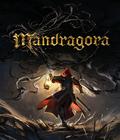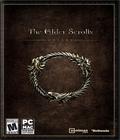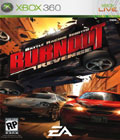Genre: Racing
Publisher: Electronic Arts
Developer: Criterion
Release Date: September 13, 2005
Buy 'BURNOUT REVENGE': Xbox | PlayStation 2
Speed. It's what the house of Burnout has been built upon. Last year, Burnout 3: Takedown amazed gamers with its spectacular crashes and astonishing sense of speed. Burnout Revenge uses the foundation of previous installments to deliver a game that is louder, faster and overall more chaotic. New modes, better tracks, "traffic checking," multi-tiered crash stages, and more reasons to blow yourself up all play a role in making Revenge more intense and chaotic than ever before.
The most important factor in racing games is control, and Revenge retains the same arcade-style control that lets you drive on the brink of destruction. Like Takedown, Revenge rewards bad behavior on the road. You have a boost meter that is filled by committing all kinds of traffic violations, including, but not limited to: tailgating, shunting, drifting, driving against traffic, taking out opponents, and traffic checking (we'll get into that one later).
Slamming into walls is allowed, as long as you don't crash headlong into them. This lenience means that you can come out of a turn and almost glide along a wall if you're in a sloppy kind of mood. It also means that you can retain your speed more easily, and speed is what this game is all about. Power-sliding is sheer joy and easy to initiate by tapping the brakes when going into a turn. While it's easy to get a power-slide started, controlling it takes some skill.
Boosting plays a major role in winning races. The boost meter, at full capacity, is made up of four segments. You start out with one segment, and every time you take out a competitor (i.e., run him off the road), a new segment is added. If you, on the other hand, are taken out or crash on your own accord, you will lose one of the extra segments that you acquired. When you are taken down, the opponent that was responsible is designated as the "revenge rival."
In the case that you do crash (and you will crash), not all hope is lost. By holding down a button, you'll enter "impact time," which is a slow-motion sequence that allows you to slightly direct your heap of wreckage into opponents. Fans of Takedown may remember the impact time camera that didn't always show what was coming up from behind your wreck. In Revenge, the camera now swings around so you can see opponents coming up from behind, making it easier to perform an "aftertouch takedown."
If you're thinking that many of these mechanics sound familiar, it's because they are. However, there are some notable features that have been added or improved greatly since Takedown. An all new addition is the ability to "traffic check." By slamming into same-way traffic, you send them barreling forward, potentially taking out opponents (or whatever other traffic is in the way). If you try this method against semis, busses or oncoming traffic, you'll be treated to a nice demonstration of your PS2's particle effects. In other words, you'll crash and burn.
Being able to traffic check means more speed, and more chaos, leaving unfortunate commuters strewn along the road. During Crashbreaker events, you'll be awarded the ability to blow yourself up on command after you enter impact time. This creates the potential to takedown every single racer in one fell swoop. Another way to take down opponents is called a vertical takedown, which is achieved by landing on top of other racers.
In Takedown, there weren't many opportunities to actually land on top of competitors. The track design is literally taken to heights, with more ramps and more alternate routes. Alternate routes were virtually ignored in Takedown, but that's not the case anymore. Most of these routes are marked off by blue lights, and you'll be led through tight tunnels, construction zones or narrow roads. You'll catch air often, and you'll be rewarded with lots of boost. All of this tight-quarters, big air, boost-heavy racing translates into almost complete chaos, and the fun of Revenge comes from the process of trying to control that chaos.
Did we mention that this game is fast? There may be times that you're playing, and you'll wonder how your brain is even registering all this speed. As you progress, you'll unlock faster vehicles, and the game will continue to push the limits of your reflexes. Whether or not the game is technically faster than Takedown is hard to say, but it definitely feels faster. This is due in large part to a landscape that is more detailed, and track segments that aren't exactly roomy. Two hundred mph feels faster with a low ceiling above you or concrete pillars near your sides.
World tour is the main single-player mode, and many different events have returned in Revenge. Crash mode is back, but it has mutated into a multi-tiered monster; the levels are bigger and more chaotic. In crash mode, the goal is to create as much monetary damage as possible by crashing into traffic and causing a huge pileup. The way you get your vehicle moving has also changed, as you now have a meter that operates basically the same way as a field goal kick or Hot Shots golf swing meter. If your timing is off, your start will be slow, or you'll blow your engine, which would require a restart.
Another change from Takedown is the way that you earn the ability to use your Crashbreaker. Now, there is a meter at the bottom of the screen, and as the pileup grows, so does the meter's percentage. Once it hits 100, you have to tap R2 as fast as you can to build up the meter, and then your vehicle detonates. After that, you can enter impact time, and direct your wreckage to another area and cause even more damage. There are some camera issues in crash mode; the camera shifts and moves quite often, and amidst all the chaos, it's easy to get disoriented. You don't have total control of the camera after you crash, so recalibrating yourself isn't easy. Hopefully next time, there will be full control of the camera, or one that zooms out to an overhead view so you can see where you need to direct your wreck during impact time. Also, having to press R2 as fast as you can isn't very comfortable.
A brand new event is called "traffic attack." Like crash mode, you have to cause as much monetary damage as possible by causing wrecks. With traffic attack, you use the new traffic checking ability to cause this havoc. Causing crashes adds time to the clock, so you have to continually check traffic, or else time will run out, and it's game over, man. It's a pretty fun addition, and sometimes things get pretty crazy as you plow through slow-moving traffic.
Road rage is back, and works basically the same as in Takedown — the whole point of this event is to take down as many opponents as possible. This is also a race against the clock, and by taking down other racers, your time is replenished so that you can continue on your warpath. If you crash, you come back, unless your car is damaged too much.
With a few new ways to take down opponents and much improved courses, road rage events are more intense than ever. Crashbreaker road rage, as mentioned earlier, gives you the option to blow yourself up during impact time so you can take some foes with you. In eliminator races, the car in last place blows up when the clock reaches zero. Of course, straight-up racing is back, where you just have to worry about coming in first. Crashbreaker races are available for all three of these modes, and the burning lap is also back, and this mode simply pits you against the clock.
The way that you progress in the world tour mode has changed as well. In each event, there are five stars to be earned. How many you earn during an event is determined by how well you perform. As you gain stars, your ranking increases; you start out as "harmless," and continue through rankings such as "reckless" and "assassin." You earn medals for first, second and third places, and trophies are awarded for achieving challenges, such as wrecking 50 cars during a traffic attack.
Multiplayer modes include different types of crash, races, road rage and traffic attack events. Online play works well, and the game still books. However, lag is more common than expected, with other players' cars twitching, sliding and disappearing at times. Sometimes traffic disappears a few seconds after you check, which is something that only happens online. It's a shame that Criterion couldn't find a way to incorporate impact time for multiplayer and online play, but that's just something that inherently won't work outside of the single-player realm.
Graphically, Revenge looks very slick, and many of the tracks have adopted a grittier look. The tracks are gorgeously detailed, even more so than before. In fact, there's so much going on graphically, it's sometimes distracting, which isn't good when you're approaching the sound barrier. The simulated sun glare, while pretty and realistic, sometimes impairs the view ahead. The vehicles are also more detailed, and while none of them are real licensed rides, many look pretty damn cool. The damage modeling is improved too, as vehicles look like mere shadows of their former selves after a wreck. There is some aliasing, but not enough to get in a huff about.
The sound effects play a large role in making this game what it is. The wind effects are second-to-none in the racing genre (even better than GT4), with traffic, pillars, lampposts and other objects whizzing by in Dolby surround sound. The wrecks are extra crunchy, and the explosions are powerful. Criterion knew exactly what parts needed noise, and what parts needed silence. For example, when flying off the edge of a cliff, everything goes silent, except for the rushing wind. You only hear the "BOOM" when you finally make impact. The sound effects used when triggering a Crashbreaker are also great. When you push the button, it sounds like a vinyl record coming to a quick halt, then a split second of silence, and then "POW!" Very satisfying indeed. EA Trax are back, and still seemed mismatched with the destructive, vengeful theme of Revenge. Whether you like the music or not, you should do yourself a favor and try the game with no music, just to appreciate the effort put into the sound effects.
 Revenge is a large improvement over Takedown, but the evolutionary leap isn't as great as it was between the second and third iterations. Still, there is plenty of chaos to warrant a purchase here, especially for fans of the last game. The sense of speed is upped a couple notches, the tracks are much more interesting, with alternate routes and lots of ramps, Crashbreaker races are immensely fun, traffic checking adds more wreckage and destruction (which is a good thing), the huge, multi-tiered crash stages are a big step up, and once again, even more speed. Fans of Takedown as well as racing in general should definitely pick up this tribute to speed and destruction.
Revenge is a large improvement over Takedown, but the evolutionary leap isn't as great as it was between the second and third iterations. Still, there is plenty of chaos to warrant a purchase here, especially for fans of the last game. The sense of speed is upped a couple notches, the tracks are much more interesting, with alternate routes and lots of ramps, Crashbreaker races are immensely fun, traffic checking adds more wreckage and destruction (which is a good thing), the huge, multi-tiered crash stages are a big step up, and once again, even more speed. Fans of Takedown as well as racing in general should definitely pick up this tribute to speed and destruction.
Score: 9.2/10
More articles about Burnout Revenge










 Burnout Revenge lets gamers rip through rush hour traffic and lay waste to scores of rubbernecking roadhogs in an over-the-top scene of vehicular mayhem. In addition to tricked out new race, crash and road rage modes, Burnout Revenge takes the series' blistering speed and spectacular destruction to dizzying new heights with an all-new Revenge mode, challenging gamers to battle the clock and unleash their frustrations on rush hour traffic.
Burnout Revenge lets gamers rip through rush hour traffic and lay waste to scores of rubbernecking roadhogs in an over-the-top scene of vehicular mayhem. In addition to tricked out new race, crash and road rage modes, Burnout Revenge takes the series' blistering speed and spectacular destruction to dizzying new heights with an all-new Revenge mode, challenging gamers to battle the clock and unleash their frustrations on rush hour traffic.
















































